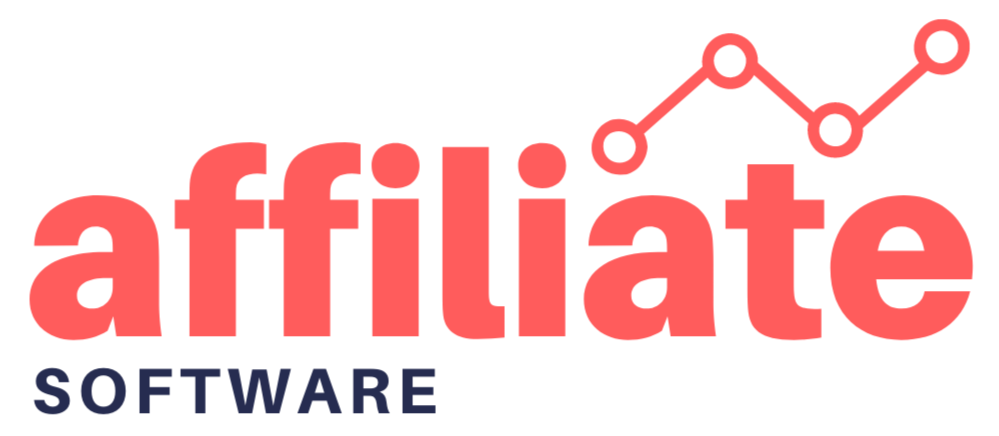Discover the pros and cons of automated affiliate link management vs. manual methods. I’ll help you choose the best approach for your marketing strategy.

Automated vs. Manual Affiliate Link Management: Pros and Cons
We manage affiliatesoftwareonline.com daily. Did you know businesses can earn 5-30% of their online income through affiliate marketing? This shows its huge potential. Yet, picking between affiliate software and networks is key for success.
Tools for automated link management save time. But manual management lets you customize more. Knowing the differences, like costs and data ownership, is vital. We’ll look at both sides to help you choose what’s best for your business.
Optimizing Amazon PPC: Automation vs. Manual Control
As an Amazon seller, you face a big choice in PPC advertising. It’s part of your Amazon marketing strategy. You must decide between automated or manual PPC campaign management. Each has its own benefits, and knowing the differences can improve your PPC results.
Automated PPC management uses algorithms for quick optimization. It handles tasks like bid adjustments and keyword research. This saves time and helps you compete better in Amazon’s fast-paced digital ads world.
| Automated PPC | Manual PPC |
|---|---|
| Decision-making by algorithms | Manual, customizable decisions |
| Flexible and adaptable to changes | Requires more hands-on management |
| Handles large data and complex scenarios | Offers more granular control and customization |
| Efficient for scaling Amazon PPC ads | Allows for tailored strategies to specific business goals |
Manual PPC management gives you control and lets you tailor strategies. You can pick and customize your keywords. This is good for sellers who want to understand their PPC campaigns better.
Choosing between automated and manual PPC depends on your goals and preferences. By understanding the differences, you can pick what’s best for your Amazon seller journey. This helps optimize your Amazon PPC, pay-per-click advertising, and Amazon marketing strategy.
Efficiency: Automated vs. Manual
PPC automation brings big wins in efficiency. It uses smart algorithms to watch and tweak campaigns all day, every day. This means ads work better and reach more people. It saves businesses a lot of time and effort.
But, for small businesses with a few keywords or products, doing things manually might be better. It lets you focus on what each customer needs. This way, you can save time with strategies that really work for your audience.
Choosing between automated and manual PPC depends on your business. Automated systems are great for making quick, big decisions and growing fast. Manual management gives you a personal touch. The goal is to find what works best for your business.
| Automated PPC Management | Manual PPC Management |
|---|---|
| Continuously monitors and adjusts campaigns in real-time | Provides a more personalized approach for small businesses |
| Optimizes ads for maximum performance and reach | Offers deeper understanding of target audience |
| Saves time and effort on repetitive tasks | Enables more tailored strategies |
Control: Automated vs. Manual
Businesses can choose between automated and manual control for Amazon PPC campaigns. Automated systems are efficient but manual management offers more control and flexibility.
Manual PPC management lets businesses tweak their campaigns. They can adjust keyword targeting and bid settings. This PPC management control helps them meet their business goals and market needs. They can quickly adapt to changes and work closely with affiliates.
Automated PPC systems also offer control. Businesses can set goals and parameters for their campaigns. This is good for those without the time or skills for manual management. Automated systems make repetitive tasks easier, saving time for other important tasks.
| Automated PPC Management | Manual PPC Management |
|---|---|
| Efficient and convenient | Greater control and flexibility |
| Set parameters and goals | Fine-tune every aspect of campaigns |
| Streamlines repetitive tasks | Align with specific business objectives |
| Beneficial for businesses with limited resources | Ability to quickly respond to market changes |
| Lacks the customization of manual control | Establish direct relationships with affiliates |
The choice between automated and manual PPC management depends on the business’s goals and resources. By considering the pros and cons, businesses can pick the best approach. This choice helps improve their brand and relationships with affiliates.
Affiliate Software vs Affiliate Networks
Businesses have two main choices for starting an affiliate program. They can use affiliate software or join an affiliate network. Each option has its own benefits and things to think about.
Affiliate networks give businesses access to many potential affiliates. This is handy for growing fast. But, it costs money – setup fees can be $500 to $2,000, and monthly fees are $250 or more. Networks also take a 1-2% commission on what they pay to affiliates.
Affiliate software like Tapfiliate is different. It might have a small fee for extra clicks, but it can save 10-30% on each sale. It also shows clear prices on its website.
- Affiliate software users have more control over managing their affiliate program
- Businesses using affiliate software own their first-party data, unlike affiliate networks which handle affiliate signups
- Affiliate software often allows more flexibility, with no exclusive contracts tying businesses in for set periods
The choice between affiliate software and affiliate networks depends on what a business wants. Things like fees, finding affiliates, owning data, and how payments work are important to think about.
Businesses can try Tapfiliate for free for 14 days. This lets them see if the affiliate program management software fits their needs. The right choice can help make more money through a good affiliate strategy.
automated affiliate link management
In the fast world of performance marketing, automating affiliate link management is key. Tools use smart algorithms to make creating, tracking, and optimizing links easier. This saves time, cuts down on mistakes, and keeps links working well.
Automating link management makes creating and sharing links simple. Tools can make unique, trackable links for each affiliate. This saves time and stops issues like link masking and link redirection.
Automated systems are great at link cloaking and link tracking. They protect your brand and give users a smooth experience. They also track your program’s performance, helping you make better choices.
Performance marketing technology makes managing links more efficient. It helps with tasks like setting up affiliates, getting leads, and paying out. This lets your team work on growing your business.
Automating link management is a big win, no matter the size of your program. It makes managing links easier, boosts your program’s performance, and increases your earnings.
Affiliate Link Tracking: Maximizing Revenue for Publishers
As a publisher, knowing how affiliate link tracking works is key. It helps you make more money from affiliate marketing. It tracks customer data like page views and clicks, giving you reports on your affiliate program’s performance.
By looking at this data, you can find out what content and sources work best. This helps you improve your affiliate strategy.
Tracking links accurately means you get paid right for your work. It also helps you find and fix broken links that cost you money. In fact, publishers lose about $160 million a month from old affiliate links.
To get the most from affiliate link tracking, focus on a few important areas:
- Content Optimization: Look at your best affiliate content and where it comes from. This helps you know what your audience likes and what works best.
- Affiliate Program Performance: Check your affiliate program’s key numbers often. Look at click-through rates, conversion rates, and average order values. This helps you see where you can get better.
- Broken Link Management: Keep an eye on your affiliate links. Make sure they’re working right. This helps you avoid losing money.
Mastering affiliate link tracking gives you insights to improve your content and affiliate program. This can help you make more money. The more you know about your affiliate links, the better you can grow your business.
| Metric | Importance | Benchmark |
|---|---|---|
| Click-through Rate (CTR) | Measures the engagement and interest of your audience with your affiliate content | Typically ranges from 0.5% to 5%, depending on the industry and content type |
| Conversion Rate | Indicates the effectiveness of your affiliate content in driving sales or desired actions | Top-performing affiliates often achieve conversion rates between 1% to 10% |
| Average Order Value (AOV) | Reflects the average revenue generated per customer through your affiliate program | Varies widely by industry, but a higher AOV is generally desirable |
Attribution Models: Understanding Conversion Credit
As an affiliate marketer, knowing about attribution models is key to making more money. These models figure out how to share credit for sales across different points in the customer’s path. They range from last-click to first-click, and even more complex ones like position-based and time-decay.
Last-click attribution credits the last interaction before a sale. First-click gives it to the first touch. Position-based models focus on the first and last interactions. Linear attribution splits the credit evenly. Knowing these can help you match your content with your partners’ needs.
| Attribution Model | Description |
|---|---|
| Last-Click | Attributes 100% of the conversion credit to the final touchpoint before the customer converts. |
| First-Click | Attributes 100% of the conversion credit to the first touchpoint in the customer journey. |
| Linear | Distributes the conversion credit equally across all touchpoints in the customer journey. |
| Time-Decay | Assigns more credit to touchpoints closer to the conversion, with the final touchpoint receiving the most credit. |
| Position-Based | Allocates 40% of the credit to the first and last touchpoints, with the remaining 20% distributed across the middle touchpoints. |
Understanding these models helps you choose the right content and marketing. This way, you can make your affiliate program more profitable. Using data to guide your decisions can keep you competitive.
Common Tracking Pitfalls and Industry Shifts
The world of affiliate marketing is always changing. New problems pop up that make old tracking ways less effective. Privacy worries and laws like the GDPR in Europe have made it harder to use cookies for tracking.
Google Chrome plans to stop using third-party cookies by 2024. This change makes tracking even harder. Publishers need to keep up with these changes and find new ways to track.
New tracking methods are becoming popular. These include:
- Postback URLs: These let affiliates report sales directly to merchants, without cookies.
- Pixel tracking: Invisible pixels track user actions and link them to specific affiliates.
- Browser fingerprinting: This method uses browser details to identify users without cookies.
Publishers must adapt to these new methods to keep their affiliate programs working well. Keeping up with the latest in tracking is key to staying ahead.
| Tracking Method | Advantages | Limitations |
|---|---|---|
| Cookie-based Tracking |
|
|
| Postback URLs |
|
|
| Pixel Tracking |
|
|
| Browser Fingerprinting |
|
|
Conclusion
In the world of affiliate marketing, finding the right mix is key. Automation saves time but manual control is essential for the best results. It’s all about balance.
Choosing between affiliate software and networks also requires careful thought. Costs, finding affiliates, who owns the data, and how payments are made matter a lot. Knowing these details helps me do better in affiliate marketing.
The secret is combining automation with hands-on management. Using new tools and strategies helps me work smarter and grow my campaigns. Keeping up with changes in tracking and attribution models helps me succeed in this fast-paced field.


Leave a Comment